Taking another look at a run that sometimes gets lost in the shuffle…
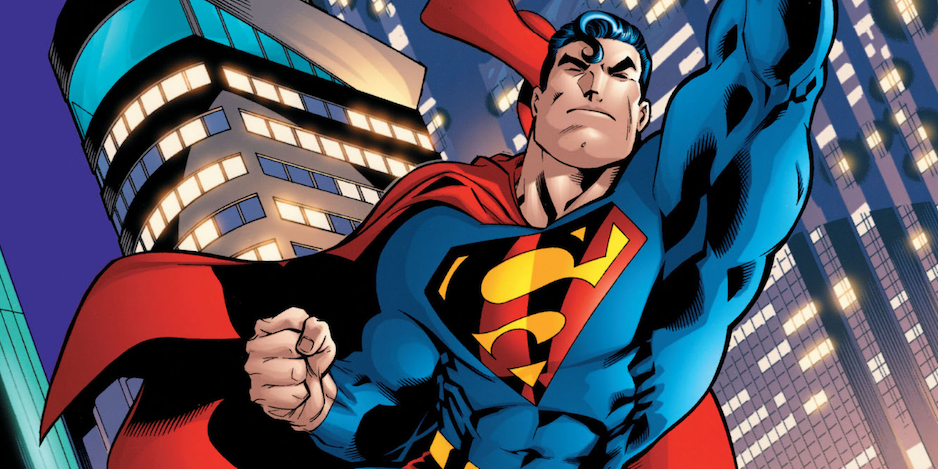
I’m a big Superman fan but I admit that I’m fairly myopic in what I like and don’t like. Documentarian and podcaster Anthony Desiato, on the other hand, is as familiar with the soaring spires of Metropolis as I am with Gotham — especially since the ’90s.
Anthony’s got a new podcast — Digging for Kryptonite: A Superman Fan Journey — and he’s in the middle of an exploration of Jeph Loeb and Joe Kelly’s time in the City of Tomorrow.
So dig these 13 REASONS TO REVISIT THE JEPH LOEB-JOE KELLY SUPERMAN ERA:

—
By ANTHONY DESIATO
Ah, to be a Superman reader in the ’90s. There were deaths (of Superman, of course, and later of the Clark Kent identity), a breakup and wedding, a trial, electric powers, and more status quo-altering events. As a ’90s kid who grew up with those stories, I certainly have nostalgia for them and respect for their creators — but my top spot goes to the run that followed.
As the previous century drew to a close, the Superman titles experienced a creative revamp led by Jeph Loeb (fresh off Superman: For All Seasons) and Joe Kelly, who took over the writing chores on Superman and Action Comics, respectively. Their tenure embraced a classic yet fresh take on Superman, emphasizing his humanity and core relationships while also introducing new concepts and challenges.
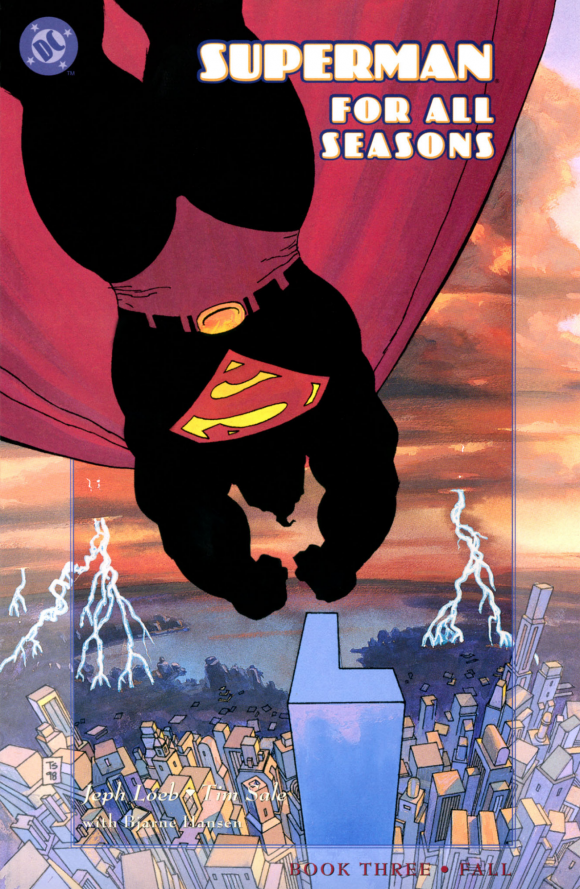
I should note here that while fans and critics, including myself, tend to refer to this period as the “Loeb-Kelly era,” and by most accounts it seems those two were indeed leading the charge, Adventures of Superman and Man of Steel were also running concurrently. In particular, writer Mark Schultz and artist Doug Mahnke imbued Man of Steel with a sharp sci-fi focus, with stories regularly featuring the Eradicator, the Fortress of Solitude and the Phantom Zone.
The Loeb-Kelly era has long been my favorite run of Superman comics, a position that I’m happy to report it maintains following a recent reread. In fact, I decided to devote two early episodes of my new podcast series, Digging for Kryptonite: A Superman Fan Journey, to breaking down the key elements, arcs, and themes. (Part 1 is out now and Part 2 is out Wednesday, Nov. 18.)
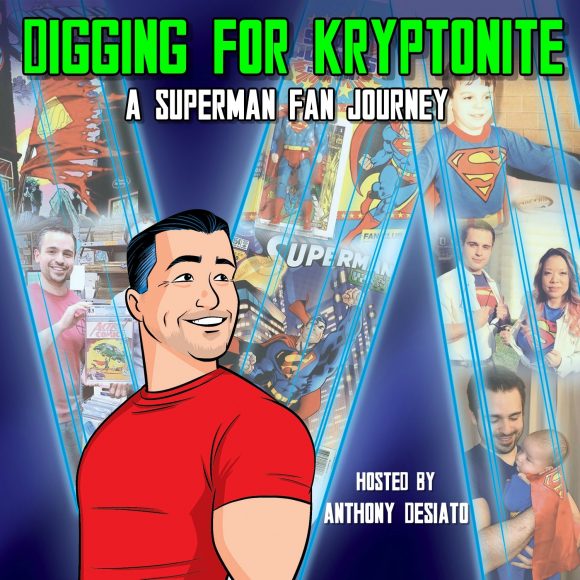
Here are 13 reasons why the Loeb/Kelly era is worth another look:
—
1. The Daily Planet. Loeb’s first order of business in his debut issue (Superman #151) was restoring The Daily Planet to its former glory after a prolonged absence. With that return came a tighter focus on the central group of Lois, Perry and Jimmy, a welcome back-to-basics approach given how much the supporting cast had ballooned in prior years.
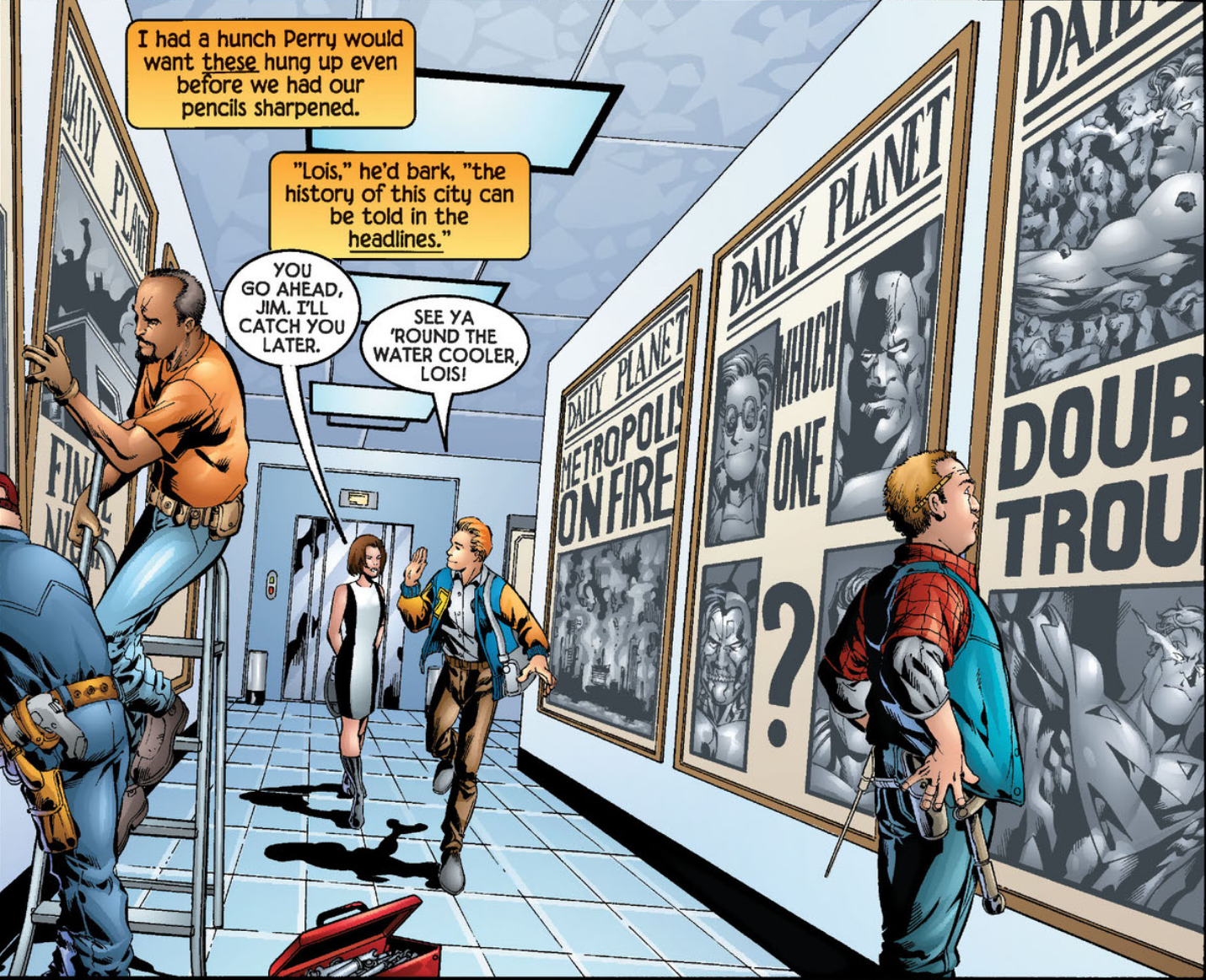
—
2. The Art of Ed McGuinness. This era gifted us with the art of Ed McGuinness, who drew the vast majority of Loeb’s 30-issue Superman run and two major arcs on Superman/Batman, making him the most consistent and prominent penciller on the Man of Steel for over half a decade. McGuinness’ bold, thick lines and larger-than-life visuals suited the widescreen action of stories like Our Worlds at War, but he also nailed the quieter, emotional moments between Clark and Lois or his parents.
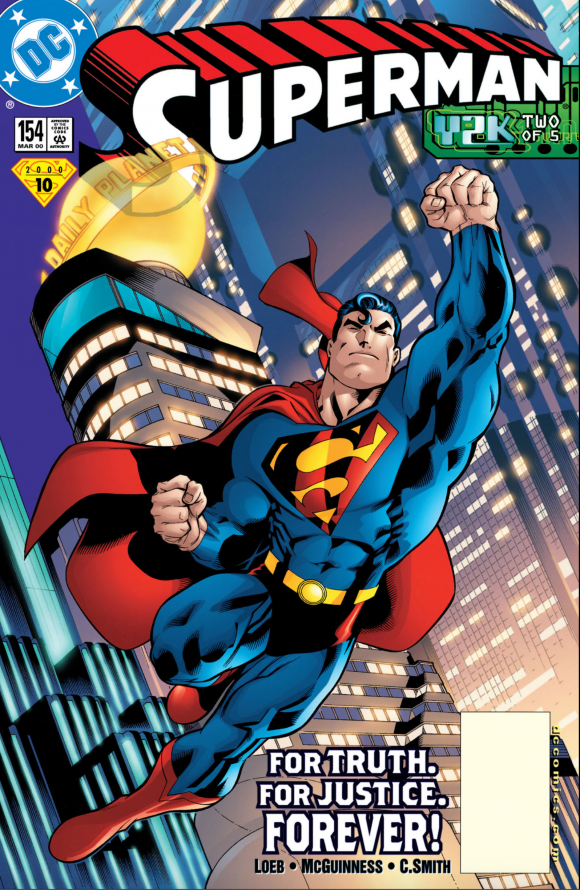
—
3. Marriage Is Good. Marriage ages characters? Not here. Loeb and Kelly gave us a fun, dynamic, and even sexy take on Lois and Clark as a married couple.
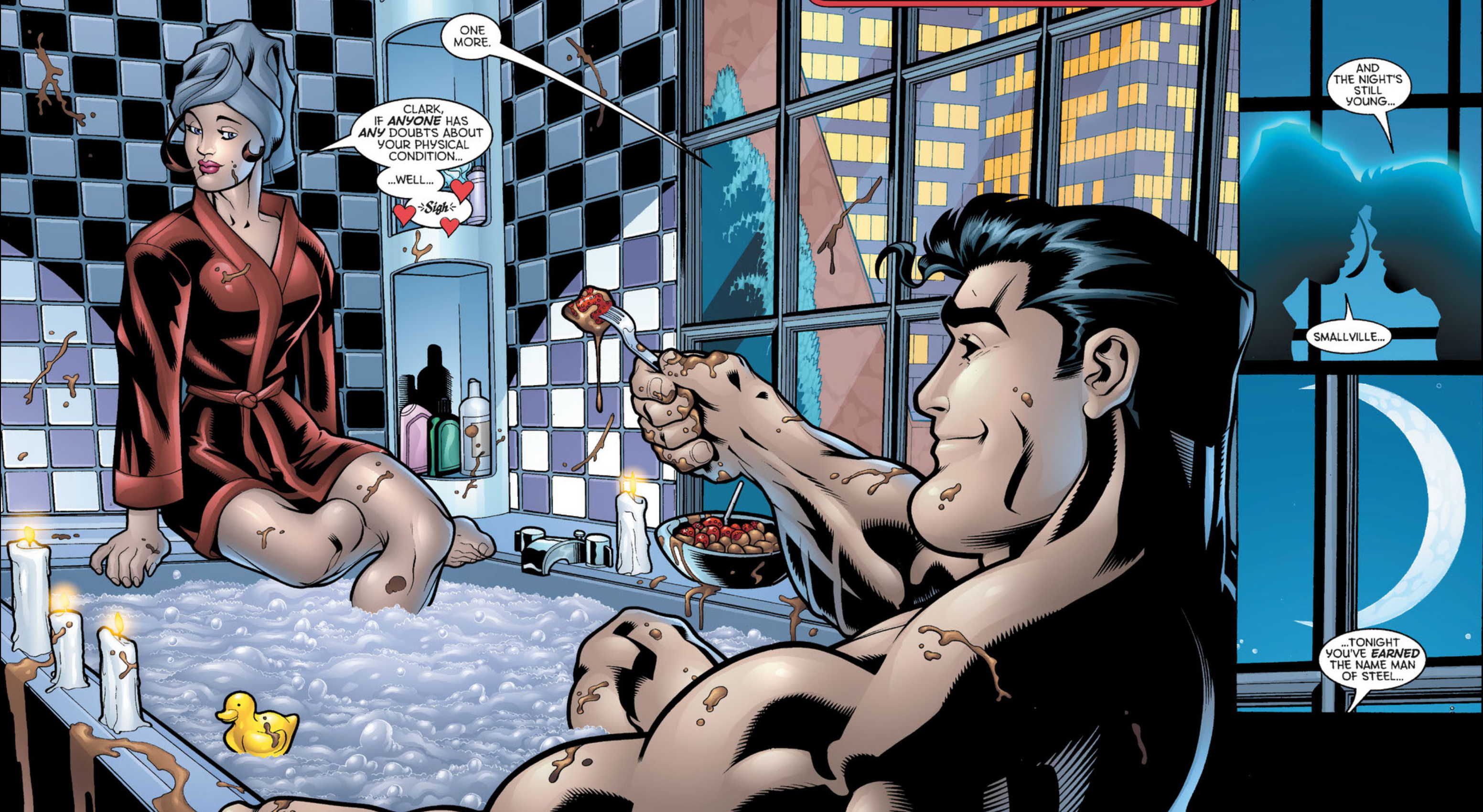
—
4. The City of Tomorrow. Among DC’s fictional cities, Gotham has long had the most distinct identity, while Metropolis felt more defined by the way it compared to Batman’s hometown: Metropolis was bright and hopeful relative to the grimy and corrupt Gotham. In the (admittedly dated) Y2K, all of Metropolis receives a massive technological upgrade courtesy of a Brainiac from the future, transforming it into a true “City of Tomorrow” to match the Man of Tomorrow.
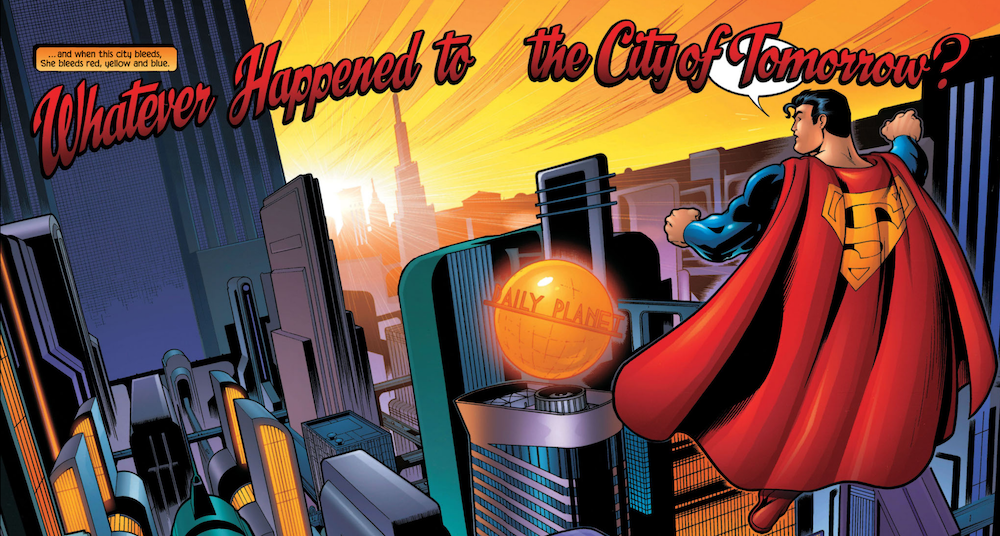
—
5. President Lex. A number of storylines were eerily prescient, making them fascinating to revisit in 2020. 2000’s President Lex saw a controversial, billionaire real estate developer take the White House to much shock and horror. Later, Our Worlds at War featured physical devastation and emotional turmoil on a universal scale mere weeks before 9/11. And in one of Loeb’s final issues, Superman #179, Harlem’s neighborhood superhero Muhammad X (making his sole comic book appearance, according to Wikipedia) charges that Superman is out of touch with the Black community, prompting him to ask Martian Manhunter why the Justice League does not have more members of color.
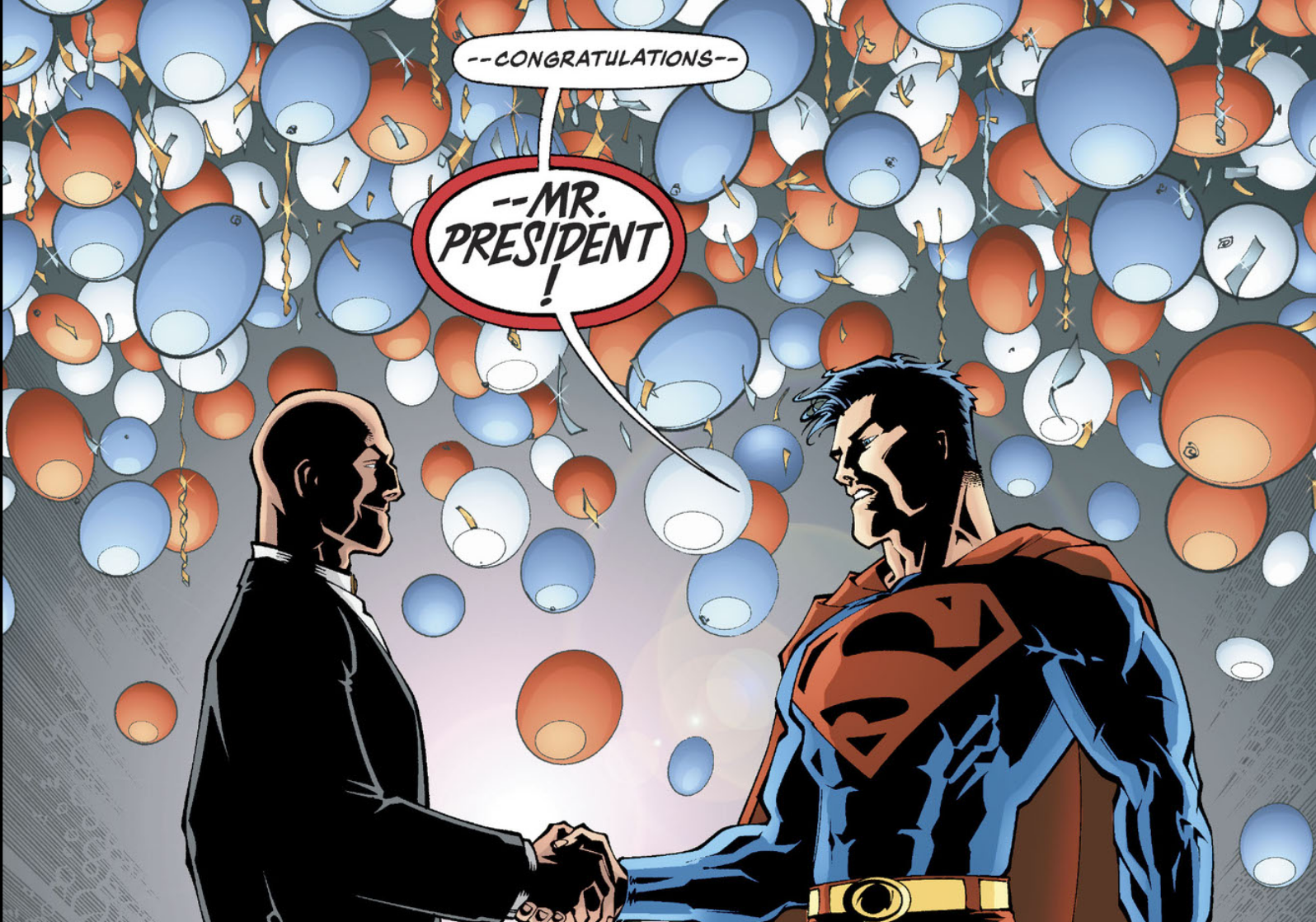
—
6. Diamonds Aplenty. Joe Kelly’s now-classic Action Comics #775 has received much praise over the years — deservedly so — but there are more gems to be mined from his Action run: a 1,000-year stay in Valhalla with Wonder Woman where Clark Kent resists the ultimate temptation because “Lois is still the only one” (#761); a stellar Batman team-up where the Dark Knight Detective helps Clark, suffering from Kryptonite poisoning, rescue a kidnapped Lois (#766); and a poignant New Year’s Eve tale that juxtaposes Pa Kent’s ritual of “walking midnight” at the farm to check on everything with Clark doing the same thing for the world by flying to NYE celebrations in every time zone (#810, Kelly’s last).
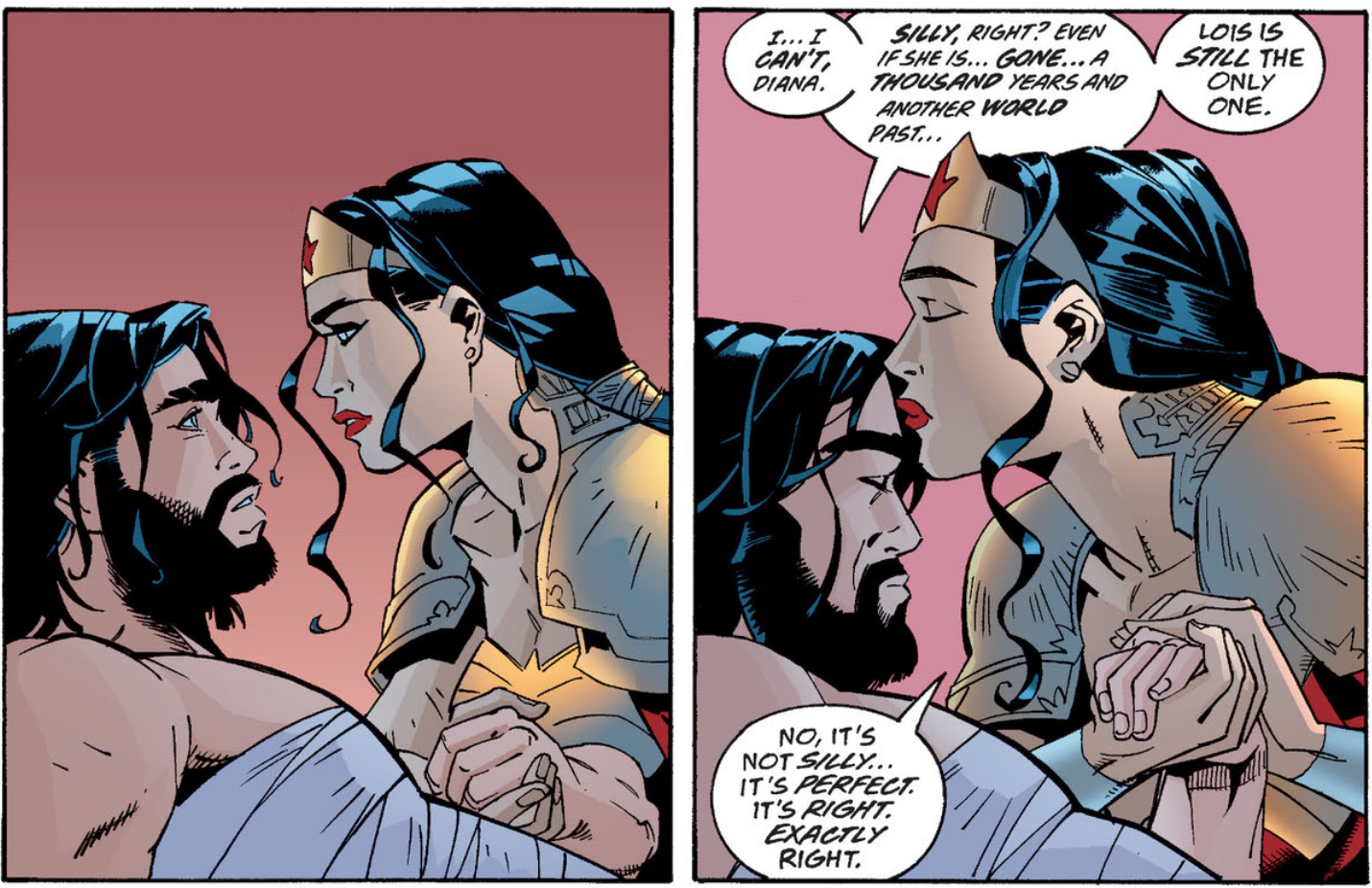
—
7. Lois’ Secret. For the duration of Loeb’s Superman run, a secret hangs over Lois and Clark’s relationship. Flipping the script, however, this time Lois is the one hiding something: In exchange for Lex selling the Planet back to Perry for $1, Lois promised to kill one story of Lex’s choosing. Neither contrived nor melodramatic, this plot point struck a rare balance: It was equally as believable that Lois would make the deal as it was that she would keep it from “Smallville.”
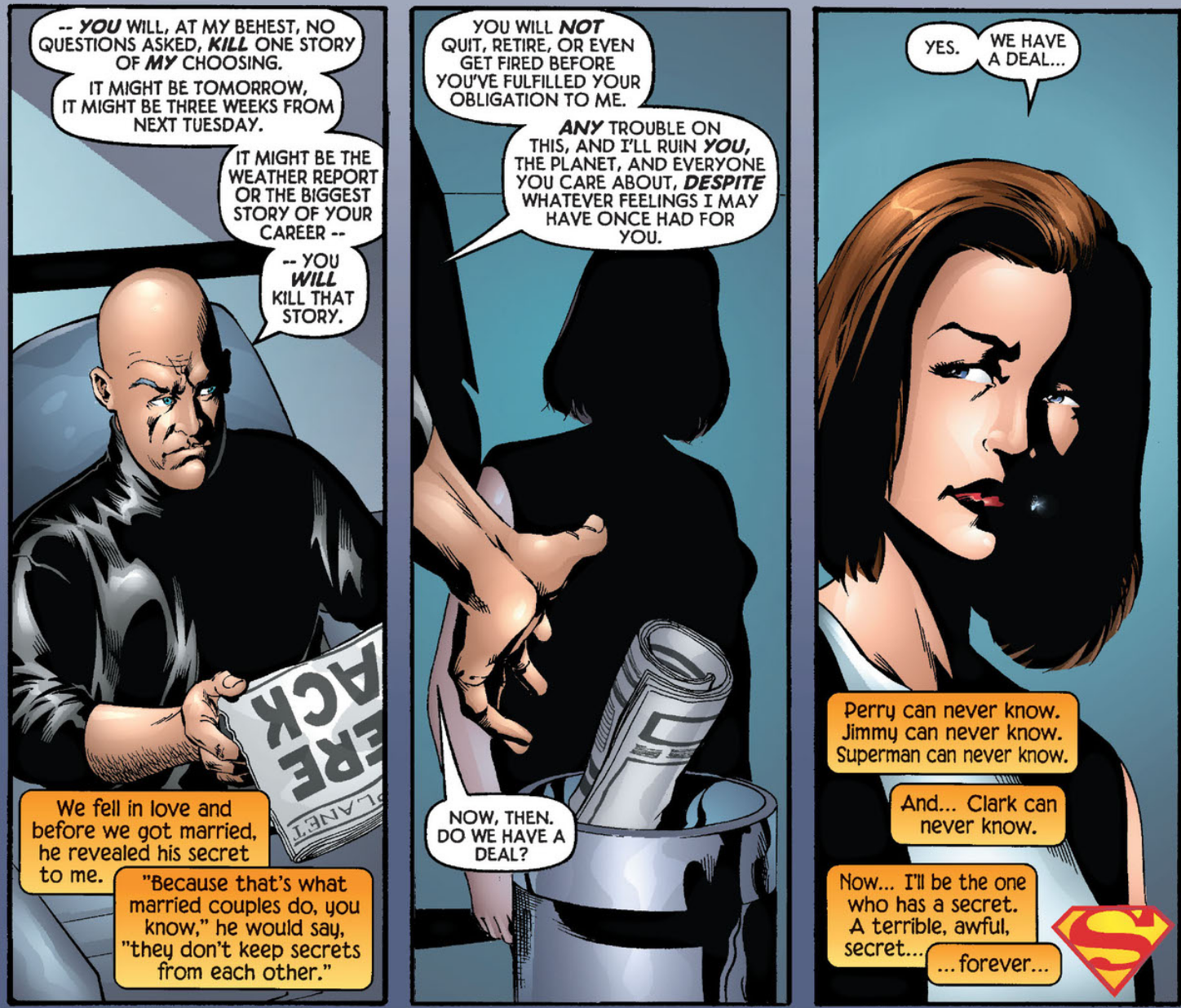
—
8. Jimmy Has Clark’s Back. Superman’s Pal lives up to his nickname in a big way. When Clark forgets to take off his wedding ring before changing into Superman, Jimmy catches the ring on camera but doctors the photo to protect Big Blue’s privacy. (Of course, the photo ends up getting out anyway, courtesy of Lex.) Despite a public cover story to explain away the ring, Superman rewards Jimmy’s loyalty by sharing that he is, in fact, married. This might seem quaint by comparison to the current Bendis run, but at the time, it was a big step in their friendship.
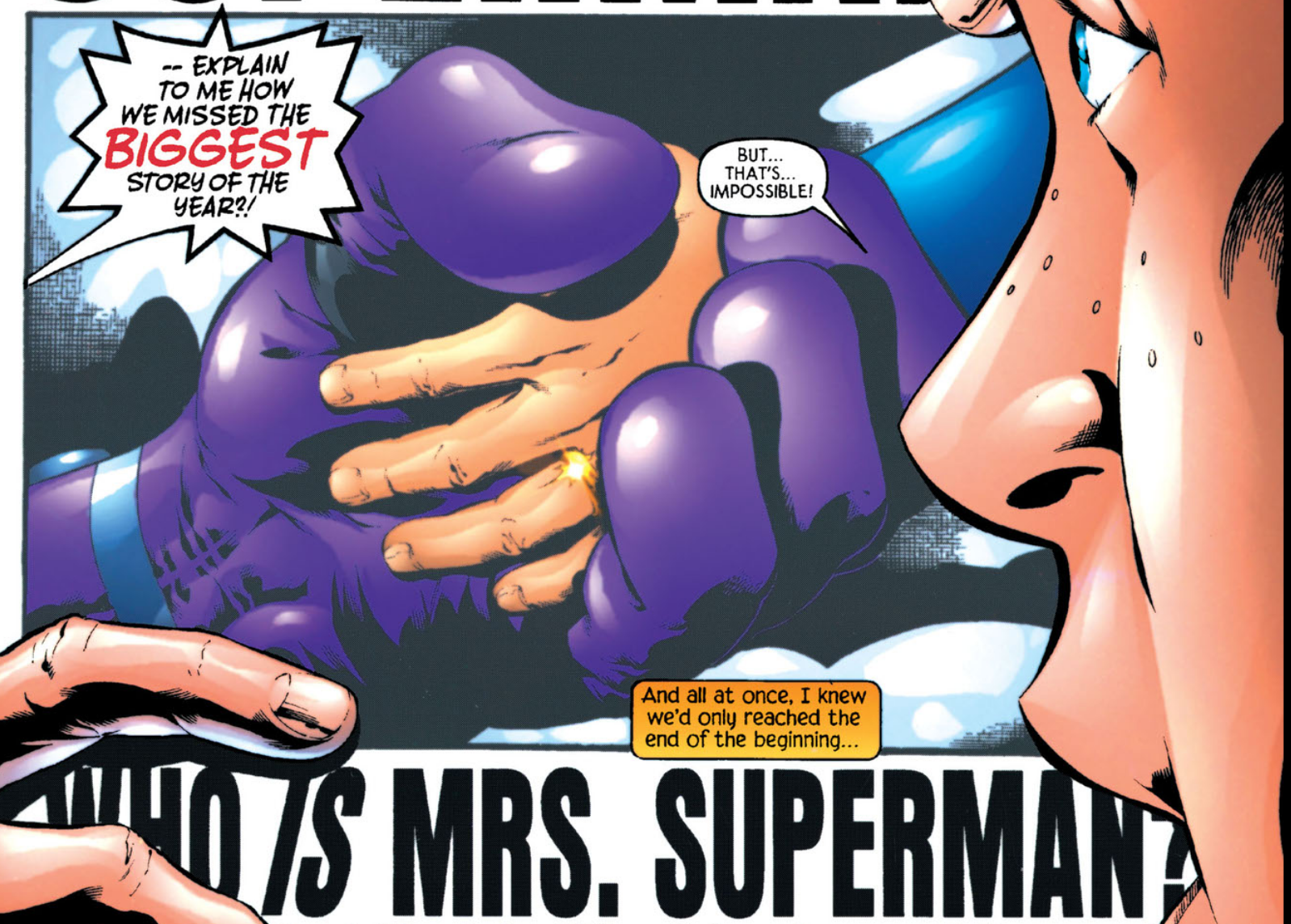
—
9. Krypton Redux. As much as the books during this time freshened up the mythology, there was also something for the Silver Age fans out there, particularly in the Return to Krypton arc. There, Loeb & Co. made somewhat of an attempt to synthesize the Pre-Crisis and Byrne versions of Krypton. Plus: the reintroduction of Krypto!
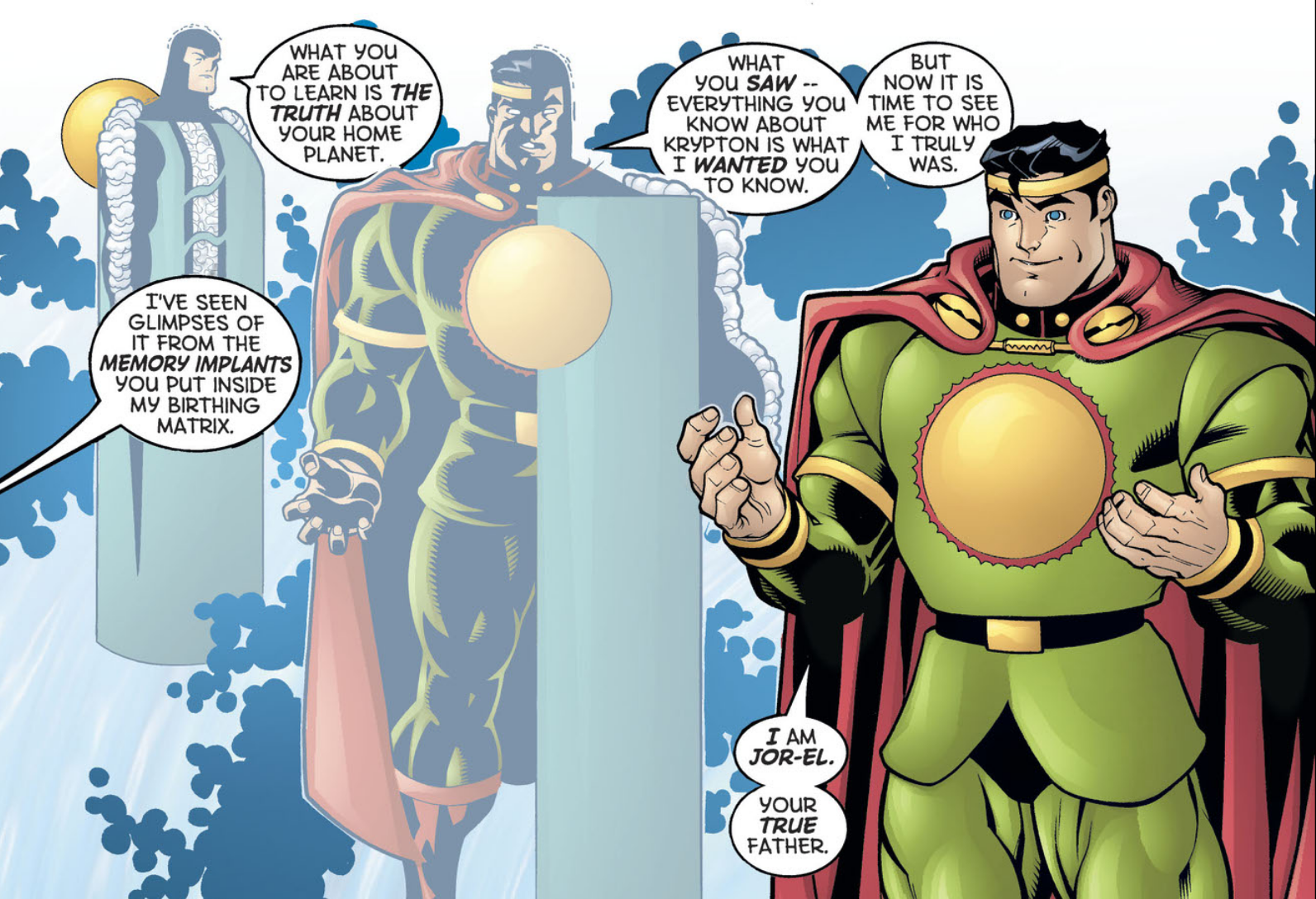
—
10. Holy Cross-Pollination, Batman! Just a short time after Lex Luthor emerged as a key player in Batman’s No Man’s Land — and a few years before the Man of Steel and the Dark Knight would team up every month in the pages of Superman/Batman — the Superman books recruited from Gotham quite a bit: Batman helps Superman get the Kryptonite ring back from President Luthor, Talia becomes CEO of Lexcorp, and a certain clown assumes the unlikely role of “Emperor Joker.” Rather than feeling out-of-place or editorially mandated, these connections organically showed that Superman existed in a wider universe.
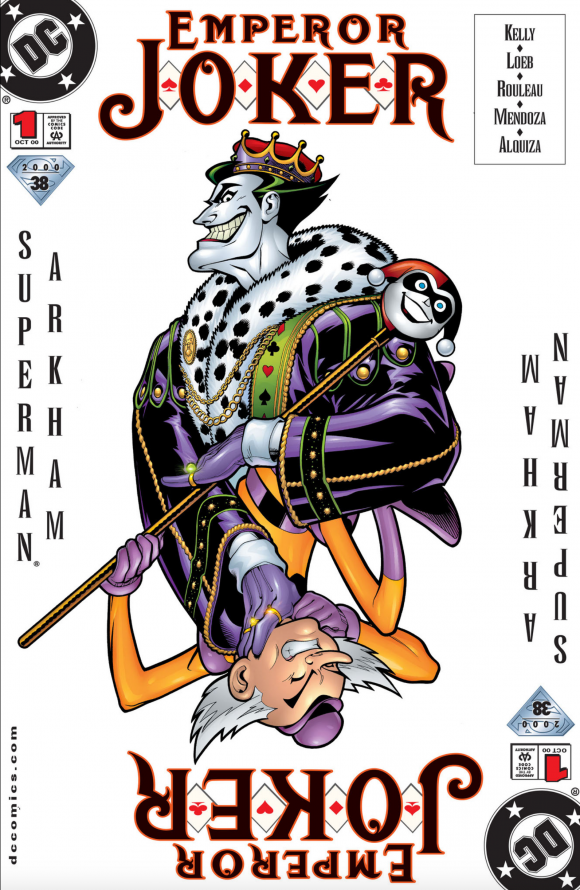
—
11. Losing Faith. What makes the President Lex storyline particularly compelling is that Superman’s battle is ideological rather than physical; the story resonates because Superman places his trust in the American people and feels a sense of loss — betrayal, even — when they elect Lex. For once, it’s not a problem he can punch… at least not until the Public Enemies arc of Superman/Batman, where Lex’s presidency comes to an end following a fistfight with Superman.
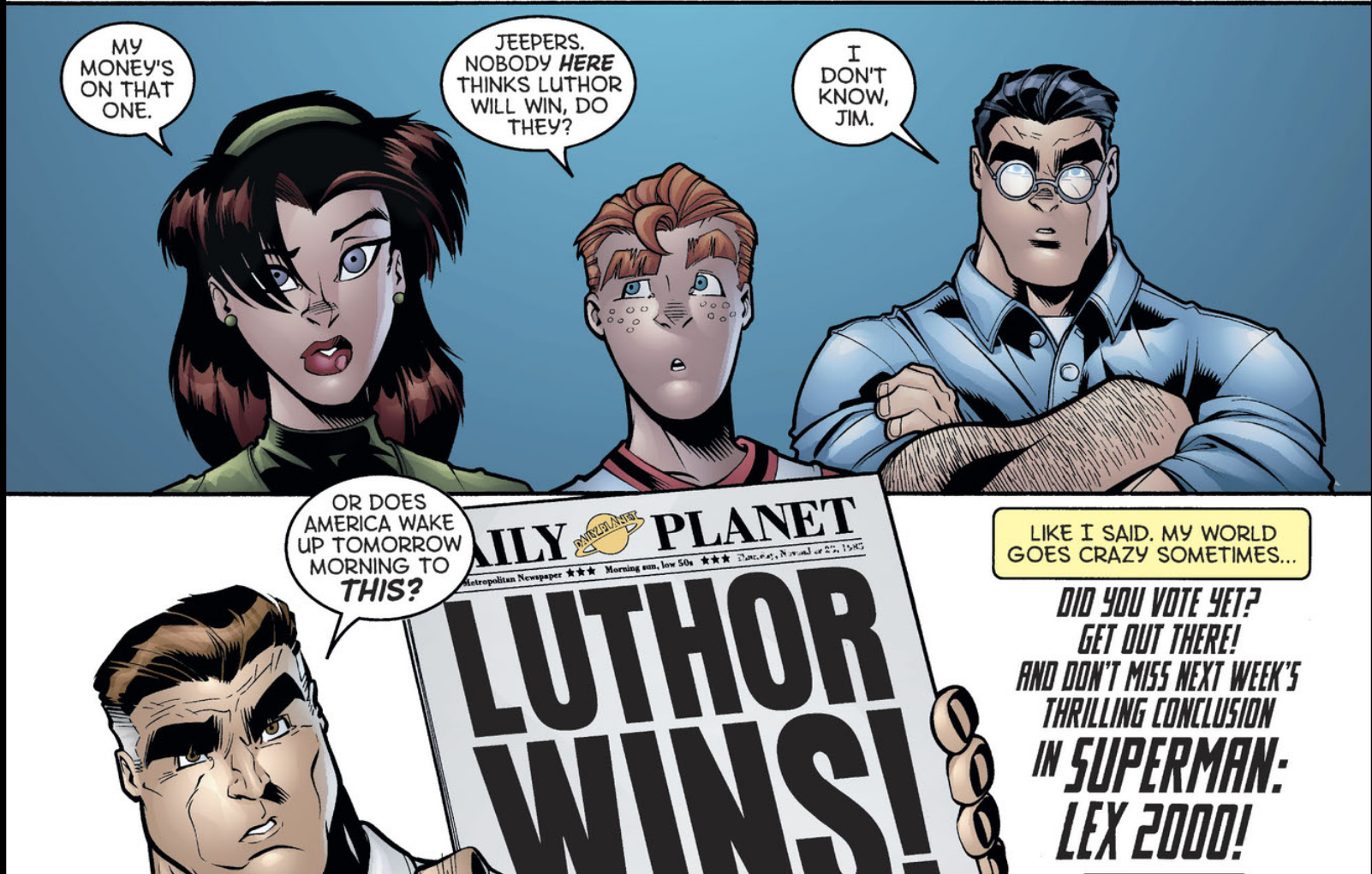
—
12. Shifting Perspectives. In For All Seasons, Loeb presented Clark’s first year as Superman through the eyes of the people around him. He employs the same narrative device here, using Lois, Perry, Pa and more to narrate most of his Superman issues. In this way, Loeb infuses his run with heart and humanity, reminding us always that there is a person underneath that “S.”
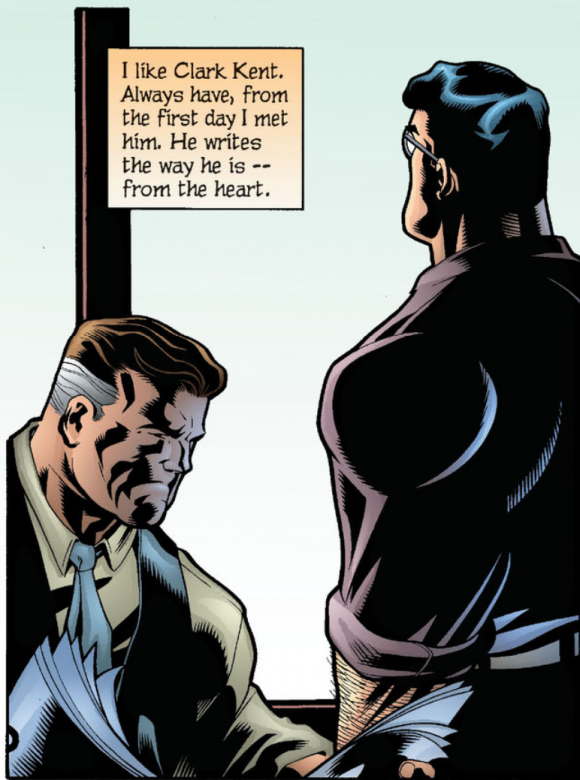
—
13. Our Worlds at War. The last major crossover of this period falls into the category of “one-dimensional space invader wants to annihilate everything” and does not quite sustain the weight of a line-wide crossover. Nevertheless, the war motif that the writers embraced put a different and engaging spin on the story, and parts of it are quite affecting (Superman — not Clark — even starts seeing a therapist!). Pro tip: Read while listening to the Man of Steel soundtrack for an added sense of epicness.
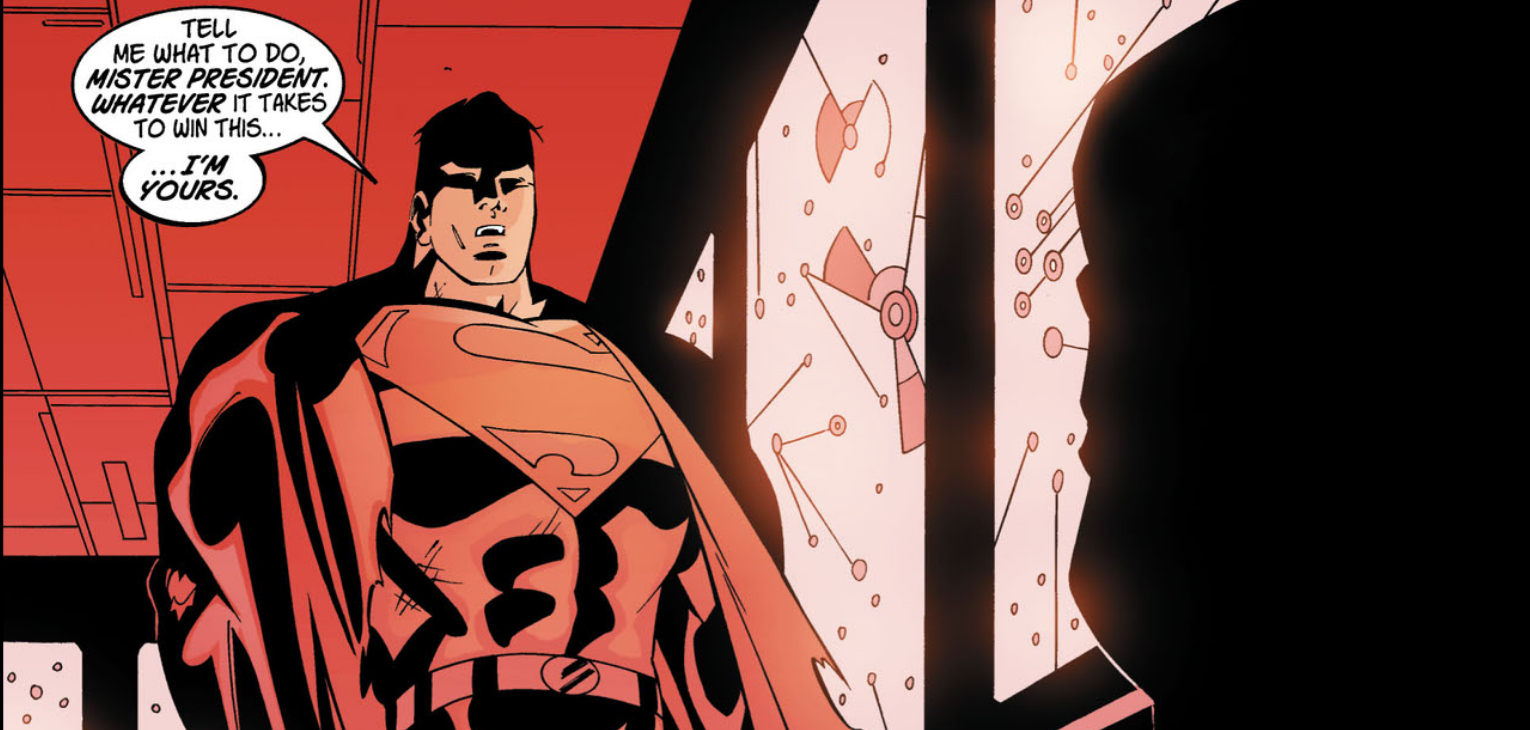
—
Anthony Desiato is a documentarian, podcaster, and lifelong Superman fan. He hosts the podcasts Digging for Kryptonite and My Comic Shop History, available on most major podcast platforms. His most recent documentary film, My Comic Shop Country, is out now on Amazon and Apple TV. Visit Flat Squirrel Productions for more.
—
MORE
— 13 Reasons SUPERMAN Still Inspires Us After 80 Years, by ANTHONY DESIATO. Click here.
— SUPERMAN and the Thrill of Chasing That Elusive Collectible, by ANTHONY DESIATO. Click here.

November 10, 2020
I shall definitely consider reading the Jeph Loeb-Joe Kelly “Superman” era sometime. ^_^
November 11, 2020
Gotta admit I missed/skipped most of these. Might need to find a reprint and give them a run.